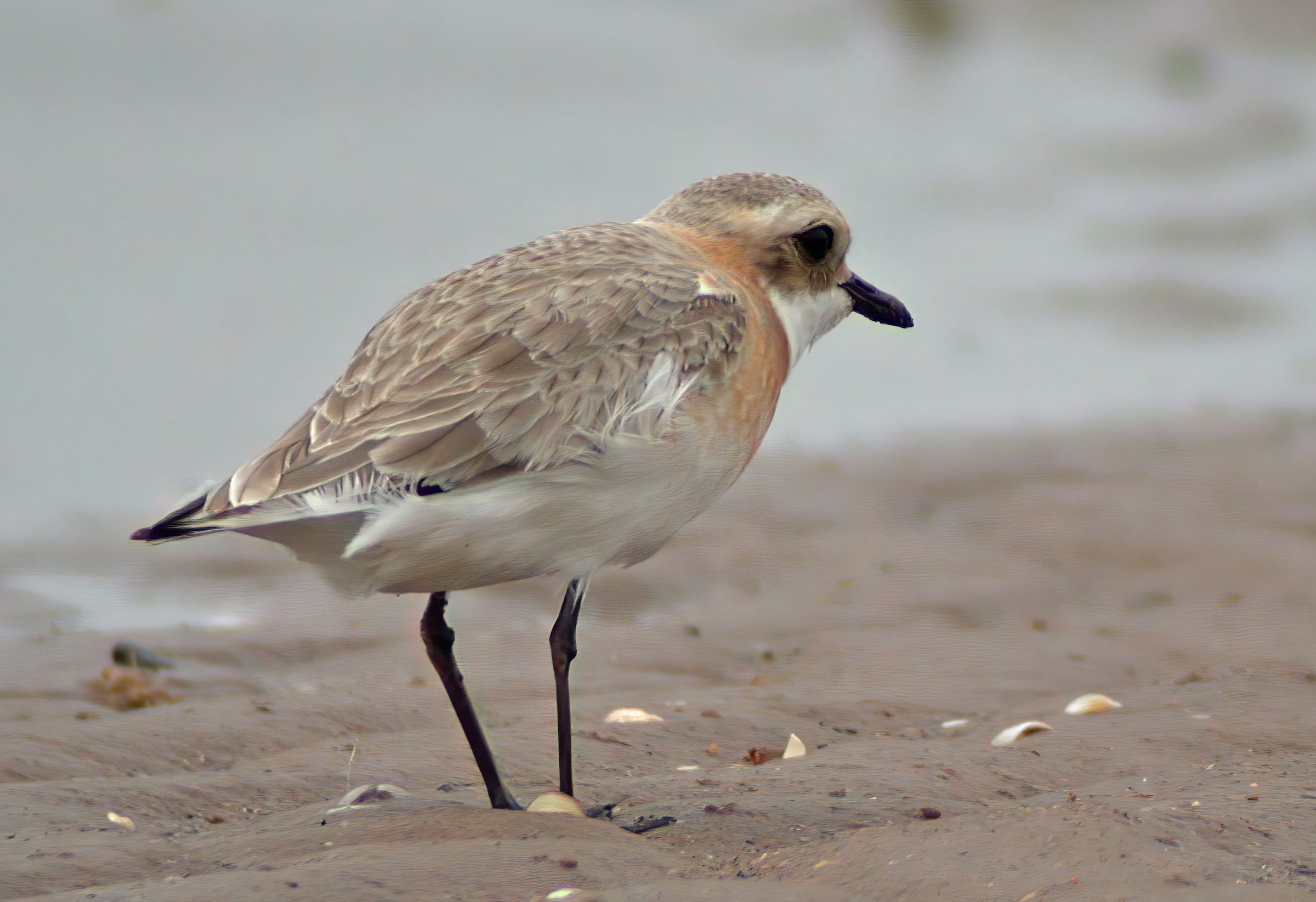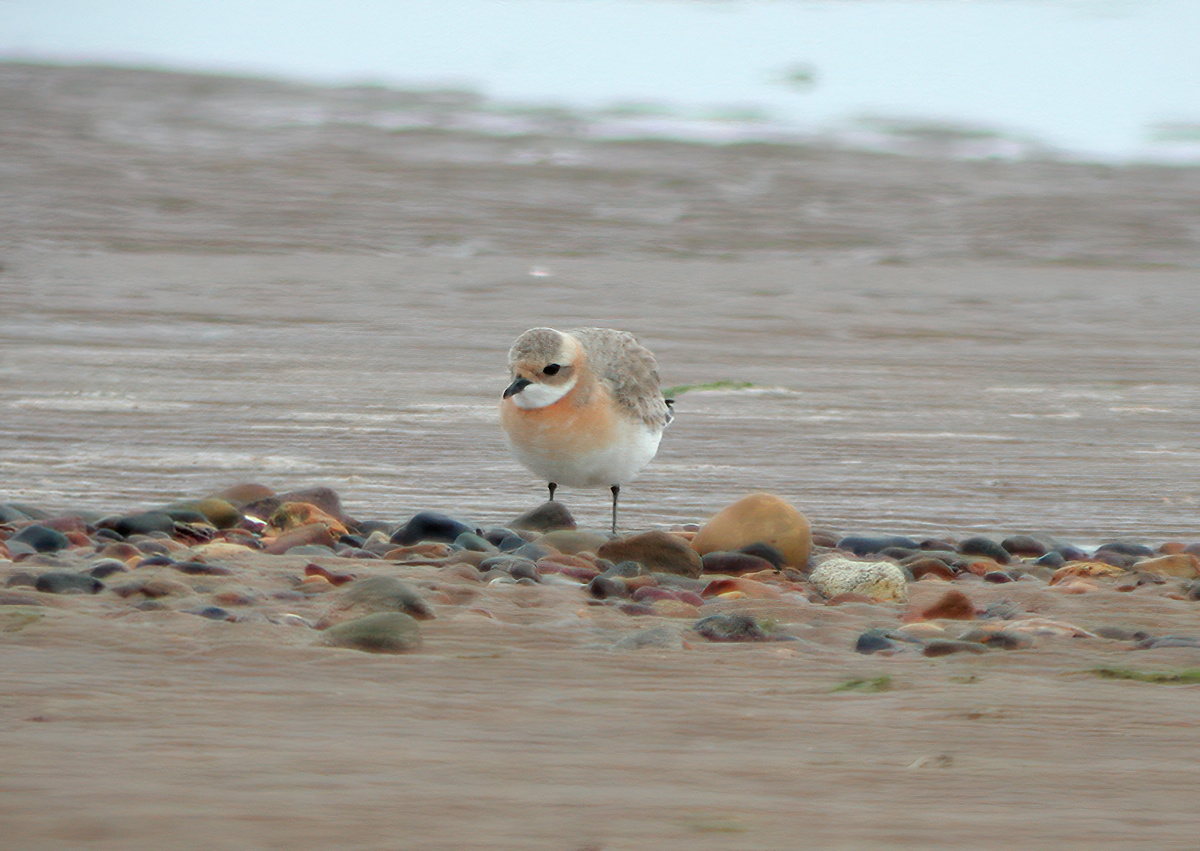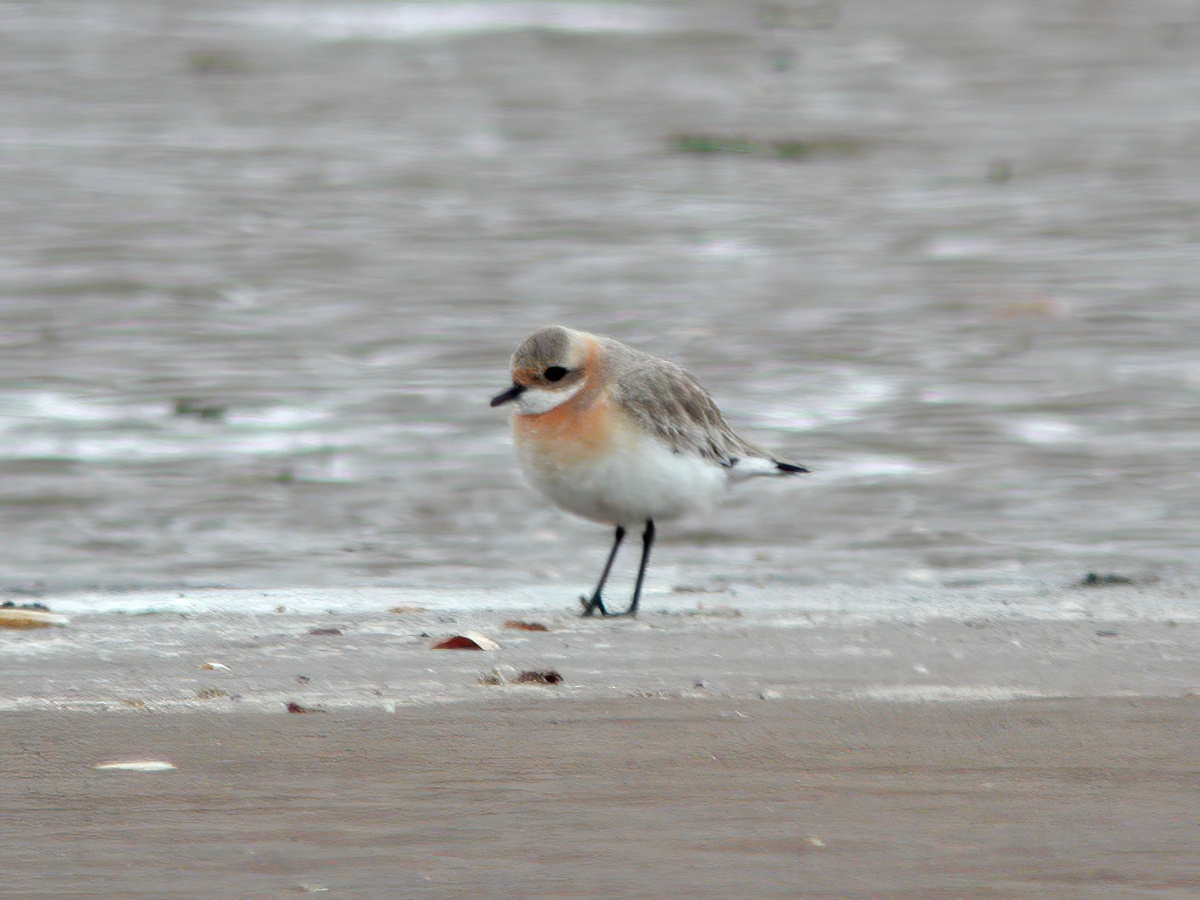Tibetan Sand Plover Charadrius atrifrons



In the afternoon of May 11th 2002, a Sand Plover sp. was found with a single Dunlin on the foreshore at Rimac, within the Saltfleetby-Theddlethorpe Dunes NNR (Clarkson undated). The plover was in summer plumage and closer inspection suggested a female Sand Plover belonging to the atrifons group of races (as the taxonomy was at the time) from south-central Russia, Himalayas and eastern and southern Tibet. Since then, Tibetan Plover, Charadrius atrifrons has been split from Lesser Sand Plover, C. mongolus, in IOC Version 13.2, August 2023 (see Update, below)
The previous British records had been in Aberdeenshire (August 18th-19th 1991) and West Sussex (August 14th-16th 1997). Both of those were initially identified as Greater Sand Plovers C. leschenaultii but later re-identified as Lesser Sand Plovers (BOU Records Committee reports). The Aberdeenshire bird was racially assigned to the mongolus group, that in Sussex to the atrifrons group. There have been three further records: Hampshire (July 22nd-26th 2003), C. m. mongolus; Lothian (July 8th-9th 2004), C. m. mongolus; Moray and Nairn (July 16th 2013), C. m. mongolus. All of these birds were in summer plumage. Separation of the two species is not straightforward, as demonstrated by the review of the first two records and the initial uncertainty over the Lincolnshire record, emphasising that care must be taken when confronted with a potential sand plover in Britain (Hirschfeld et al. 2000).
| Site | First date | Last date | Count | Notes |
| Saltfleetby-Theddlethorpe NNR | 11/05/2002 | 15/05/2002 | 1 | Female atrifrons |
Finder’s report: Lesser (now Tibetan) Sand Plover at Saltfleetby-Theddlethorpe NNR, May 11th-15th, 2002, first county record.
by B. Clarkson
Note: this report appeared in the Lincolnshire Bird Report for 2002. The separation of this species from Greater Sand Plover C. leschenaultii is not always straight forward and the BBRC report for 2002 noted the debate and argument surrounding the accepted record of a Greater Sand Plover which frequented the Don Estuary, Northeast Scotland, in August 1991 which was eventually reidentified as a Tibetan Sand Plover. Clearly, this species pair can still cause identification problems. The Rimac bird was, however, a typical Tibetan Sand Plover, with its relatively short legs, large head and stubby bill.
Update (August 2023):
IOC Version 13.2 splits Tibetan Sand Plover Charadrius atrifrons (including pamirensis and schaeferi) from Lesser Sand Plover C. mongolus (re-named Siberian Sand Plover) based on phenotypic differences and phylogenetic analysis which demonstrates paraphyly of these two taxa relative to Charadrius leschenaultii (Livezey 2010; Wei et al. 2022).
Circumstances and description
Early afternoon by the “Plot”, Barry Clarkson recommended, based on recent visits, a check of the Rimac saltmarsh pool as water-level was ideal for migrant waders when viewed from the south. Whilst heading to the saltmarsh pool, Mike Tarrant saw two waders fly over from the south and land on the muddy margins towards the back of the pool. One was a breeding-plumage Dunlin, whilst the other was somewhat larger with white under-body and wings and a warm-coloured breast. At the pool edge, it stood hunched as the Dunlin actively fed; however, what we saw heightened our interest enormously. Noting pale sandy upperparts, blackish legs, a seemingly quite stubby black bill, orange forehead and a broad ochre-orange breast-band – it was clearly a sand plover.
A strong heat haze made the task of discerning detail difficult. Obviously, it was necessary to go closer, but a flock of Whimbrel fed amongst the vegetation between the pools and us. Fortunately, when the Whimbrel flew off, our target bird remained.
Closer views revealed the proportions suggested Lesser Sand Plover yet compared with tundrae-type Ringed Plover and Dunlin, the size gave the impression of Greater Sand Plover. Plumage details indicated female, but not of the familiar eastern forms of Lesser (C. mongolus) and Greater (C. leschenaultii) Sand Plovers at this time of year. This left us with the unfamiliar western forms of Lesser Sand Plover (C. m. atrifrons) and Greater Sand Plover (C. l. columbinus). Progress was halted a as bait digger walked in off the north side of the pool alerting the waders. Although the disturbance subsided, without warning the Sand Plover flew east over the sand flats. It was relocated that evening towards the Haven mouth by Neil Drinkall.
The next day the bird was still present and the general consensus of opinion of the observers studying the bird favoured Lesser Sand Plover, yet proportions and size, compared with Ringed Plover, still misled some to thinking it was a Greater Sand Plover.
With the bird present for the next few days, it gave many the opportunity to become acquainted with this form of Lesser Sand Plover. The bird belongs to the atrifrons group from south-central Russia, Himalayas and east and southern Tibet, which represents the contemporary known “Lesser Sand Plover” or more apt Dutch name, Tibetan Plover” (C. atrifrons).
On the last day, a Ringed Plover flew in and invaded the Sand Plover’s immediate feeding territory. The Sand Plover responded with head-lowering and rear-tilting behaviour towards the Ringed Plover and whilst raising its wings it emitted a hard, double trill recalling Ruddy Turnstone rendered as “k-rrrrr, k-rrrrr”. The following is typical of female C. atrifrons:
Upperparts and crown – pale sandy-grey, ear coverts slightly darker and upturned across the nape.
Foot and leg colour – towards black (graphite-grey).
Bill – graphite, short and of even width lacking distinct bulbous tip of C. mongolus.
Chin, throat, belly, vent, and flanks – clean white. Lack of black border to orange breast. Ochre-orange of breast running up and across mid-nape. Rump with broad lateral white areas narrowing on uppertail coverts.
Tail – evenly coloured with broad white tail sides.
References
Clarkson, B (undated). Lesser Sand Plover at Saltfleetby-Theddlethorpe NNR, May 11th-15th 2002. Lincolnshire Rare & Scarce Bird Report 2000-2002, pp. 69-70.
British Ornithologists’ Union Records Committee: 25th Report (October 1998)
British Ornithologists’ Union Records Committee: 39th Report (October 2010)
Hirschfeld, E., Roselaar C. S. and Shirihai, H. (2000) Identification, taxonomy and distribution of Greater and Lesser Sand Plovers. British Birds 93: 162-189.
(Account as per new Birds of Lincolnshire (2021), included September 2022)

